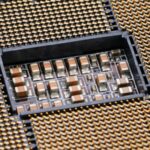 The photovoltaic industry is at a pivotal moment. While lead halide perovskite solar cells (LHPSCs) have delivered impressive power conversion efficiencies—25% for single‐junction and 29% for monolithic tandem setups—they come with concerns over long-term stability, phase degradation, and lead toxicity. If you’ve ever wrestled with these challenges, you’ll appreciate the search for safer, more sustainable alternatives.
The photovoltaic industry is at a pivotal moment. While lead halide perovskite solar cells (LHPSCs) have delivered impressive power conversion efficiencies—25% for single‐junction and 29% for monolithic tandem setups—they come with concerns over long-term stability, phase degradation, and lead toxicity. If you’ve ever wrestled with these challenges, you’ll appreciate the search for safer, more sustainable alternatives.
Researchers at the Autonomous University of Querétaro in Mexico have set their sights on a promising candidate: SrHfSe₃. This chalcogenide perovskite offers high chemical stability, an adjustable bandgap, and excellent photon absorption properties, along with improved p-type carrier mobility. Their work aims to pave the way for environmentally friendly, lead-free solar cells.
The team explored a device architecture consisting of FTO/BaSnO₃/SrHfSe₃/HTL/Au. Initially, MoS₂ was used as the hole transport layer (HTL); however, in an inventive twist, they replaced it with 40 alternative HTLs—including inorganic semiconductors, polymers, and MXenes. Leveraging the SCAPS-1D simulation tool, they assessed 1,627 different configurations and refined key parameters such as absorber acceptor density, defect density, and thickness under real-world conditions.
Further analysis involved a comprehensive evaluation of 41 HTLs grouped into three categories. Techniques like capacitance-voltage analysis, Mott-Schottky plots, and impedance spectroscopy helped reveal improvements in light absorption, reduced recombination losses, and better charge transport. Ultimately, gains in short-circuit current density, quasi-Fermi level splitting, and internal electric fields were linked to enhanced device performance.
In fact, configurations utilising HTLs based on SnS, CPE-K, and Ti₂CO₂ delivered power conversion efficiencies of 27.87%, 27.39%, and 26.30% respectively. These results underscore the practical potential of SrHfSe₃ when paired with carefully selected HTLs, offering a robust path to efficient and safe solar technology.
Integrating SrHfSe₃ with diverse HTLs marks an important stride towards solar cells that are not only high-performing but also environmentally responsible. As the global push towards renewable energy intensifies, such innovations are set to influence both research directions and future commercial applications.








